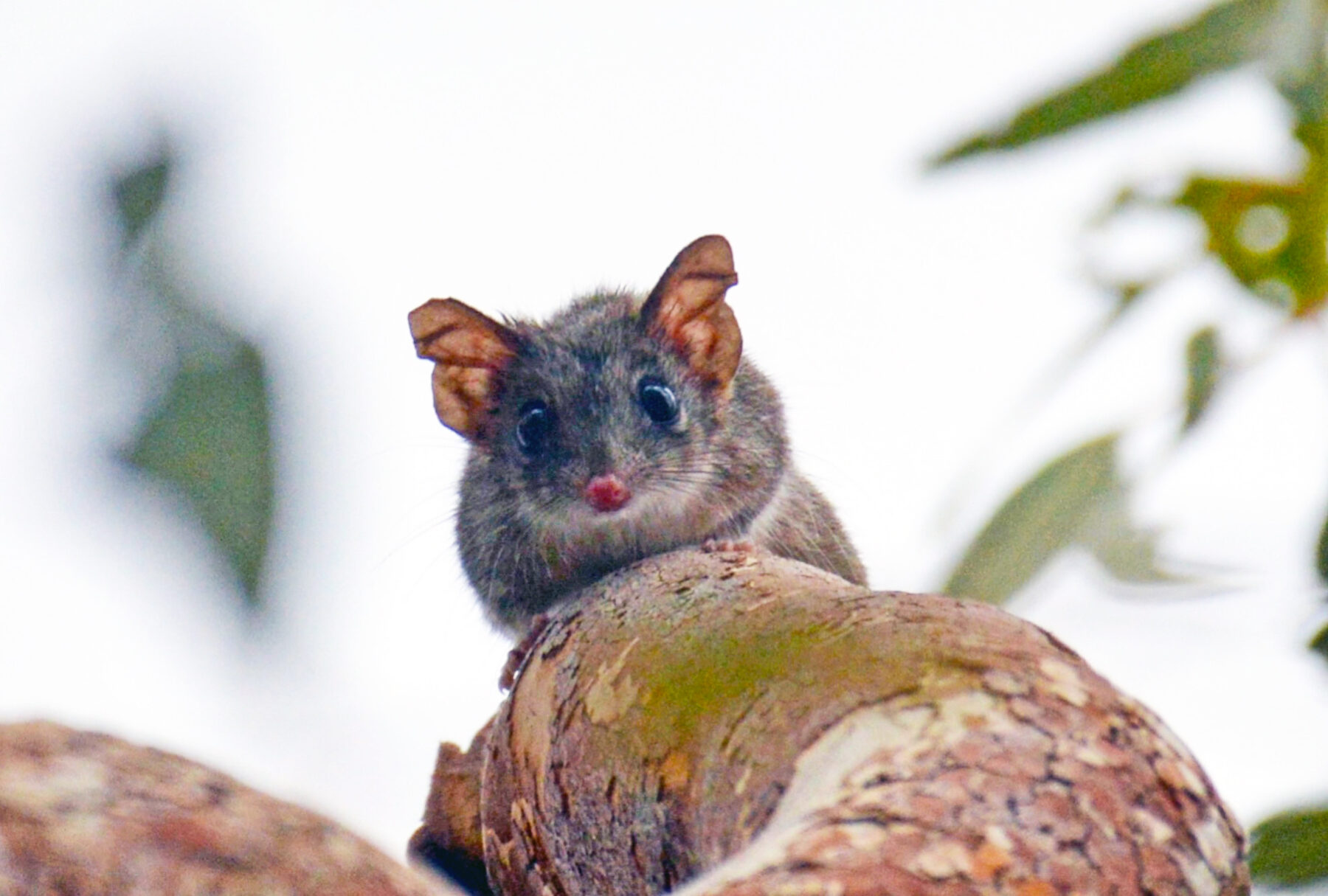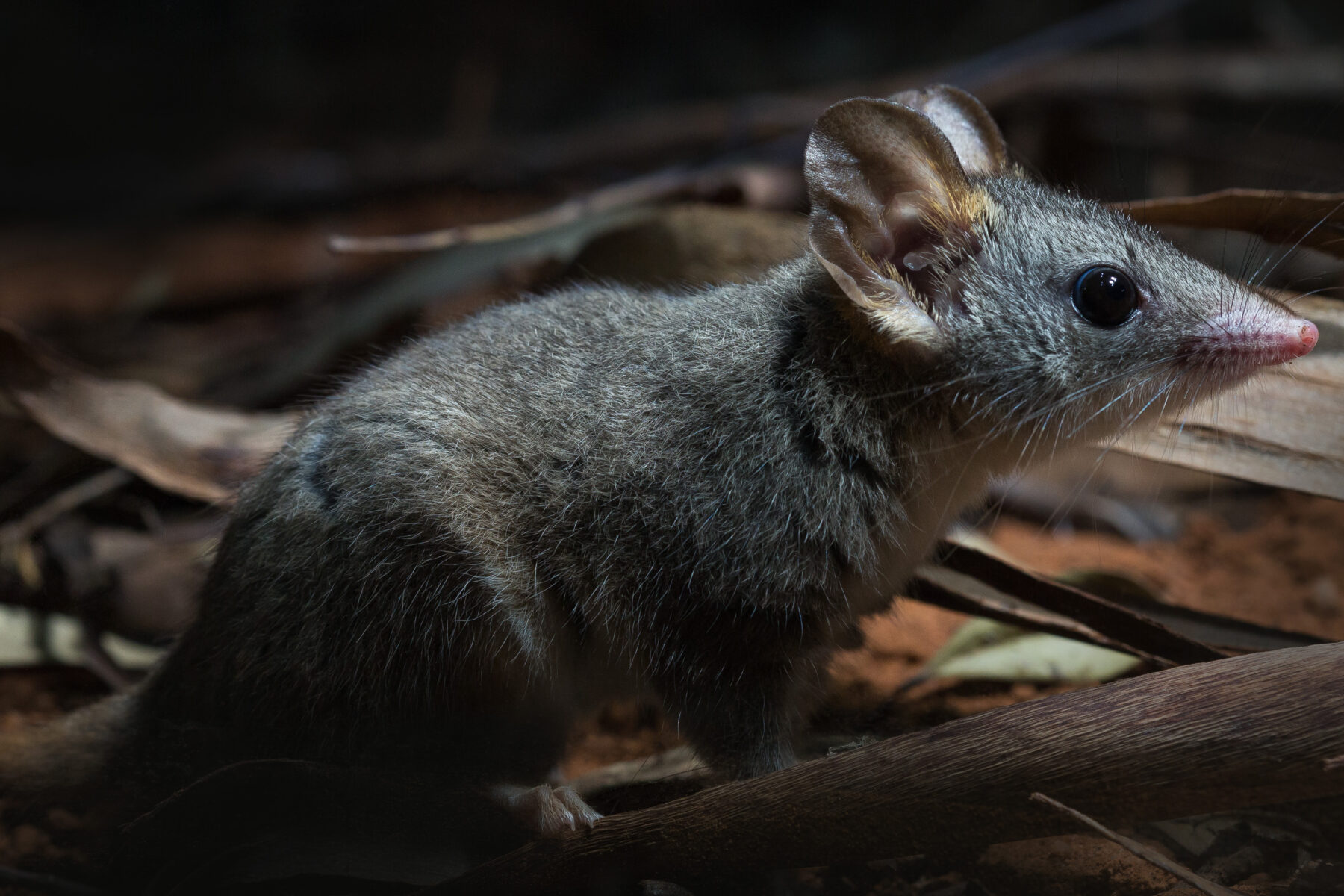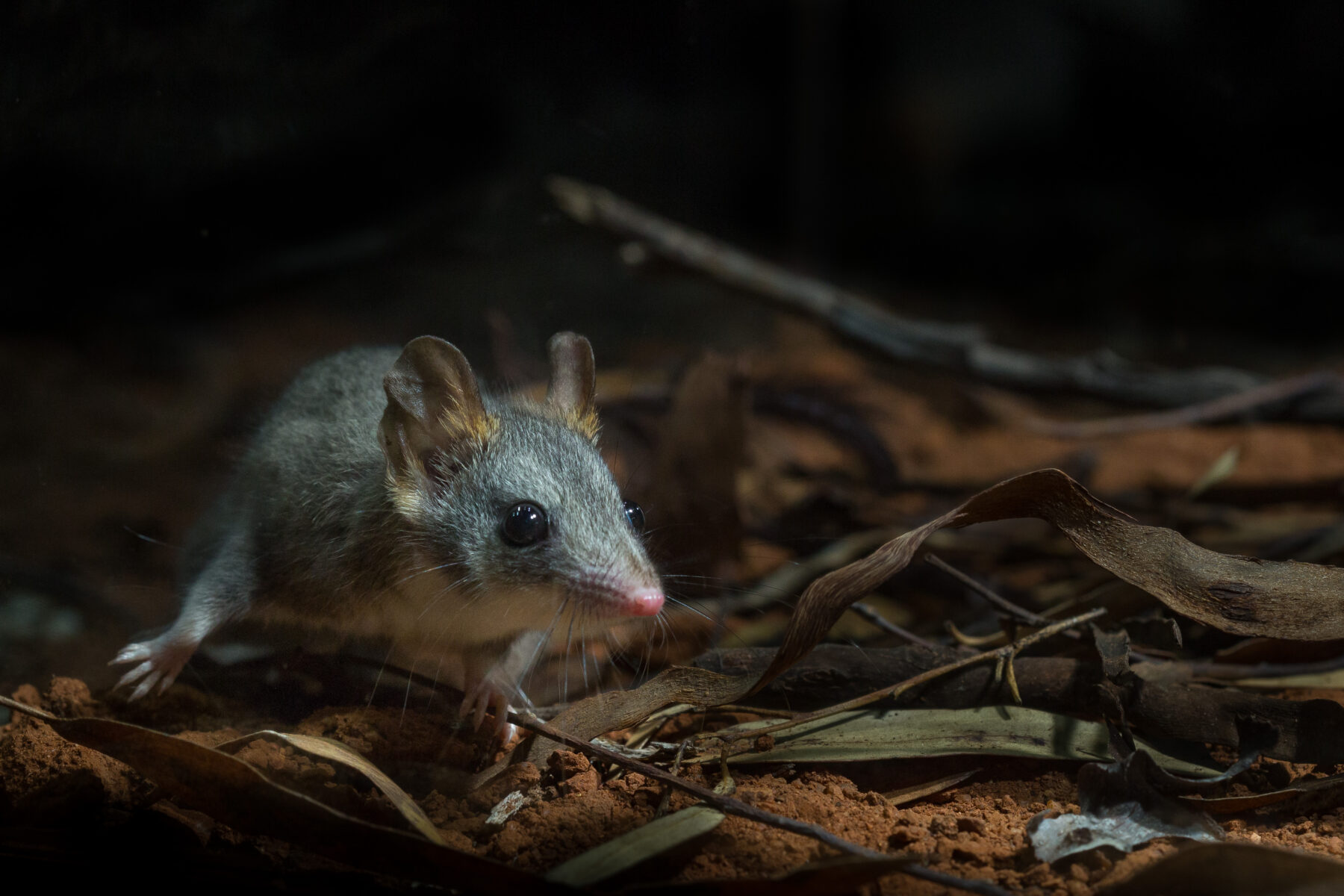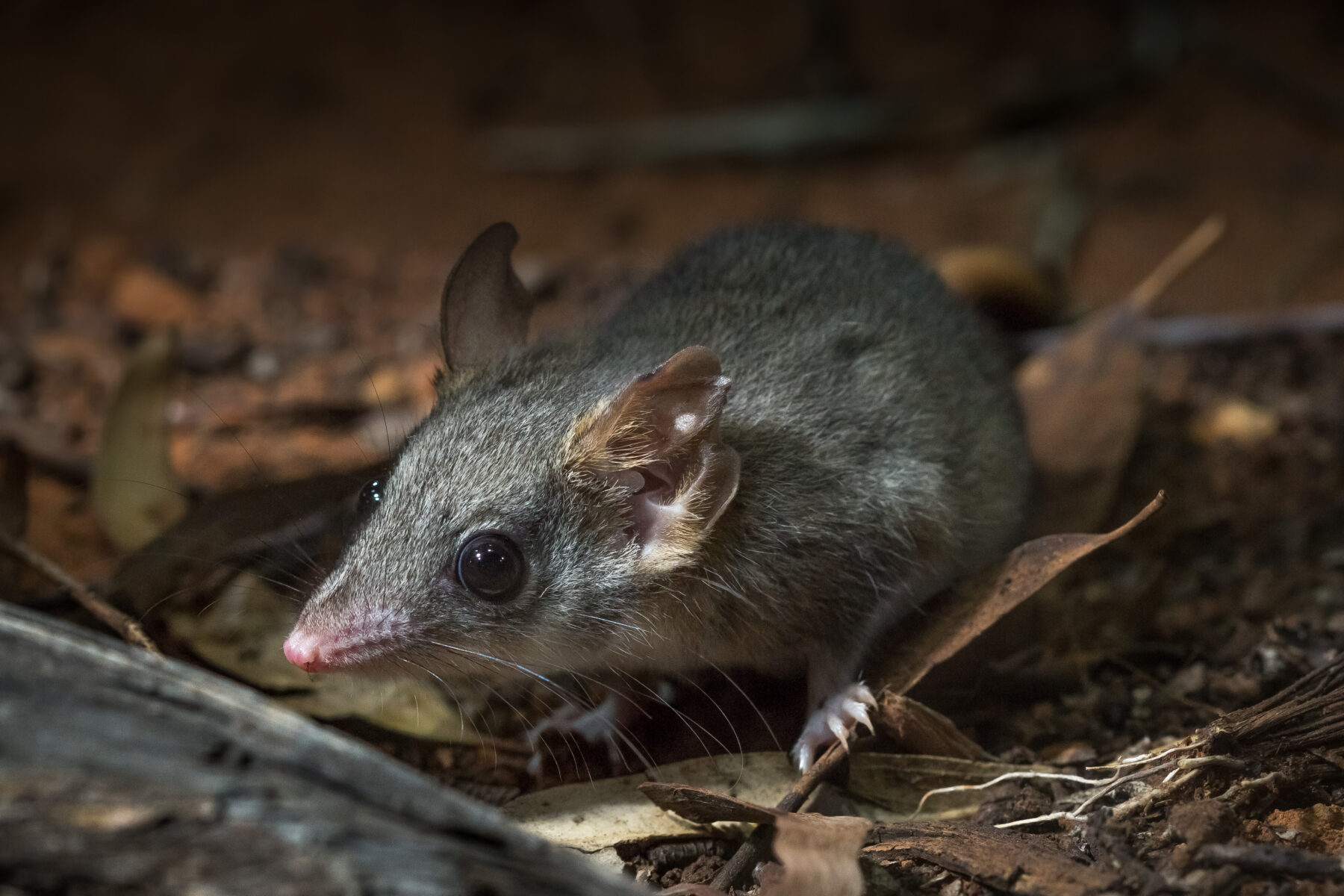New safe haven for locally extinct red-tailed phascogale

Meet the red-tailed phascogale (Phascogale calura), a small semi-arboreal carnivorous marsupial, ash grey in colour with a trademark reddish-brown tail adorned with long black hairs at its tip.
“They are a fascinating Australian species for many reasons” says Australian Wildlife Conservancy (AWC) Regional Ecologist, Dr Greg Holland.
“They belong to the same animal family as Tasmanian devils and quolls. As such they are voracious carnivores and skilled hunters. They hunt both on the ground and in trees, searching for insects, spiders, and even small birds, reptiles and mammals.
“They also reportedly do not need to drink water!”
Weighing in at an average of just 43 grams for females, and 60 grams for males, what these tiny critters lack in size they make up for in strength – able to leap an impressive two metres between tree canopies.
Unfortunately, it also seems the males don’t know when to stop digging into their strength reserves. During the winter mating period, males stop eating to focus solely on their reproduction duties. The result is a 100 per cent post-mating mortality rate. The females, however, will live for up to three years and produce two to three litters of young during that time.
But the phenomenon of males mating themselves to death could actually be for the greater good of the species, with experts arguing it ensures greater diversity of paternity, and ensures more resources are available for the mothers and their young, with no males competing for food and shelter.

Fast facts:
Scientific name: Phascogale calura
Size: Average body weight of 60 grams for males, 43 grams for females
Diet: Carnivorous, feeding on a wide range of insects and spiders, and occasionally small birds, reptiles, and mammals
National conservation (IUCN) status: Near-Threatened
Wild population: Estimated nationwide population of 9,000 mature individuals
Image credit: Aliesha Dodson/AWC
Species decline
In the 1800s, populations of the red-tailed phascogale were widespread throughout Western Australia and extended eastward through to the Murray Darling basin in New South Wales.
Remnant populations now occupy less than one per cent of this former range.
“Wild populations are now restricted to native vegetation throughout the wheat belt of south-west Western Australia,” says Dr Holland.
The species is listed as Near Threatened nationally, and locally extinct in New South Wales.
Dr Holland says predation by foxes, habitat fragmentation and loss, and lack of suitable nesting hollows have all contributed to the decline of the species. The primary cause, however, is predation by feral cats.
Insurance populations
In late 2021, teams from AWC and the NSW National Parks and Wildlife Service (NPWS) worked together to return the red-tailed phascogale to its former home in New South Wales. A population of 60 individuals, bred in captivity at Alice Springs Desert Park and Adelaide Zoo, were released into a fenced, feral predator-free refuge within Mallee Cliffs National Park in the west of the state.
Dr Holland says that, while monitoring the success of the species since its reintroduction to Mallee Cliffs has its challenges, early indications show the program is working.
“Red-tailed phascogale are notoriously difficult to capture and so, surveying the population can be difficult. However we are monitoring the new population using multiple methods including camera traps, nest box inspections and live trapping. Although still early days, they appear to be doing well at Mallee Cliffs, with animals in healthy condition and signs of reproduction,” he says.
During 2017 and 2018, AWC also reintroduced the species into feral predator-free areas at Mt Gibson Wildlife Sanctuary in Western Australian, and Newhaven Wildlife Sanctuary in the Northern Territory.

Establishing a NSW stronghold
AWC has just secured $115,000 in state government funding (through the NSW Department of Planning and Environment’s NSW Environmental Trust) to assist with another safe haven for the red-tailed phascogale.
This time 150 individuals will be translocated to Scotia Wildlife Sanctuary, a 8,000-hectare feral predator-free area in south-west New South Wales.
“This funding is great news for the red-tailed phascogale,” says Dr Holland.
“Scotia Wildlife Sanctuary sits within the historical range of the species, and so a reintroduction would effectively restore the species to part of its former range where it has been absent for many decades.”
Dr Holland explains the benefits of this reintroduction will be three-fold:
“By establishing a new population and increasing the global population size, we help to secure the long-term survival and improve the conservation status of the species,
Reintroduction to Scotia will expose the species to environmental conditions operating across its former range, thereby helping to maintain the long term genetic adaptive potential of the species,
Reintroduction will help to restore natural ecological processes at Scotia which have been out of balance for many decades owing to the local extinction of many native species.”
The 150 red-tailed phascogales will join four other mammal species already reintroduced to Scotia, including the greater bilby, numbat, bridled nailtail wallaby and burrowing bettong.








